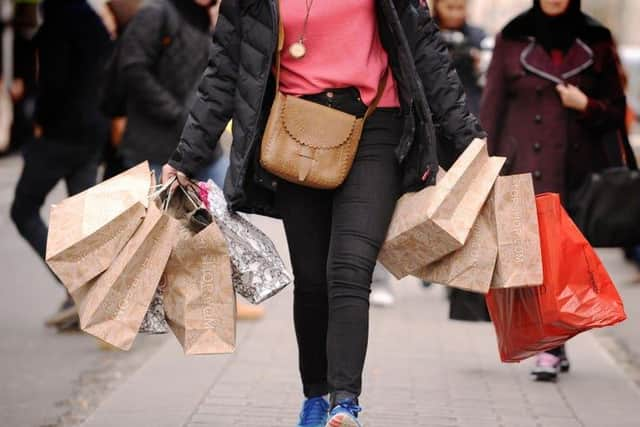Footfall to Doncaster shops on the increase and recovering from the damage of 2020
and live on Freeview channel 276
Life in Doncaster this summer was much more normal than last year, data suggests, though footfall remained below pre-pandemic levels.
All coronavirus restrictions were lifted in England on July 19, with people allowed back in hospitality venues without needing to socially distance for the first time since March 2020.
Advertisement
Hide AdAdvertisement
Hide AdGoogle uses location data from phones and other personal devices to track trends in people’s movement in different parts of their daily lives.


It compares footfall in five areas outside of the home - retail and recreation, supermarkets and pharmacies, parks, public transport and workplaces - to a five week baseline period recorded before the Covid-19 crisis.
In South Yorkshire, average activity across these categories was four per cent below normal levels between July and September.
However, this was up significantly from summer 2020, when football was 16 per cent below baseline.
Advertisement
Hide AdAdvertisement
Hide AdGoogle data for July to September in South Yorkshire shows that activity in retail and recreations establishments was 10 per cent below normal.
Activity in supermarkets was up four per cent and 44 per cent in parks and public spaces.
There was 31 per cent less activity on public transport and 26 per cent less in workplaces.
Most rules were relaxed last summer in England, with shops, outdoor hospitality and indoor venues reopened - though nightclubs remained shut, large scale events were banned and social distancing rules were still in place.
Advertisement
Hide AdAdvertisement
Hide AdAcross the UK, activity increased from eight per cent below normal levels last summer, to three per cent above this year.
Retail and recreation establishments - such as restaurants, cafes and shopping centres - saw a 17 per cent point increase, matched only by supermarkets and pharmacies.
Paul Martin, UK head of retail at accounting company KPMG, said: “Following a period of extensive lockdown, there was certainly pent up demand from consumers to get out and into stores to enjoy the physical shopping experience they had missed.
“We saw retail sales on the high street grow by nearly five per cent in July and online shopping levels fall back as shoppers purchased clothes, shoes and accessories for those much needed social events.”
Advertisement
Hide AdAdvertisement
Hide AdHe said the Euro 2020 football tournament and a period of hot weather in July gave customers plenty of opportunities to celebrate and spend money - though a better summer would have further boosted the fortunes of retailers.
Retail analytics from Springboard said its own data showed a significant increase in footfall on UK high streets.
Diane Wehrle, insights director at Springboard, said the “absence of east international travel” increased the popularity of day trips and holidays within the UK this year, providing a boost to high street footfall.
She said: “In coastal and historic towns the improvement was even greater, demonstrating the appeal of town centres to visitors.The British Retail Consortium said its figures show footfall in high streets, retail, parks and shopping centres rose from July to August, but it was still below normal.
Advertisement
Hide AdAdvertisement
Hide AdKyle Monk, director of insights at the BRC, said: “While it is doubtless that the reduction in restrictions and rise in vaccinations have greatly helped footfall regain ground since last year, it remains well below pre-pandemic levels.”
